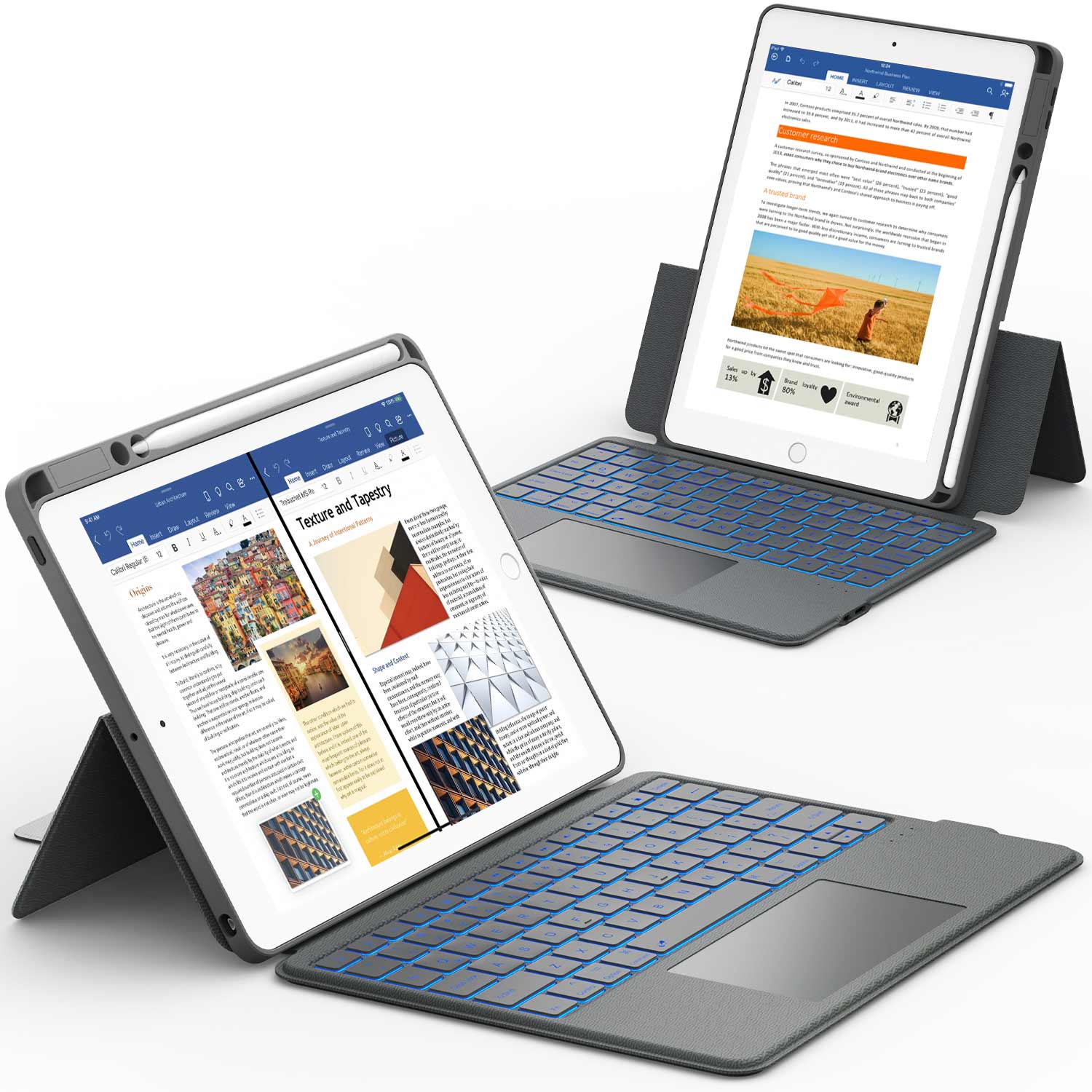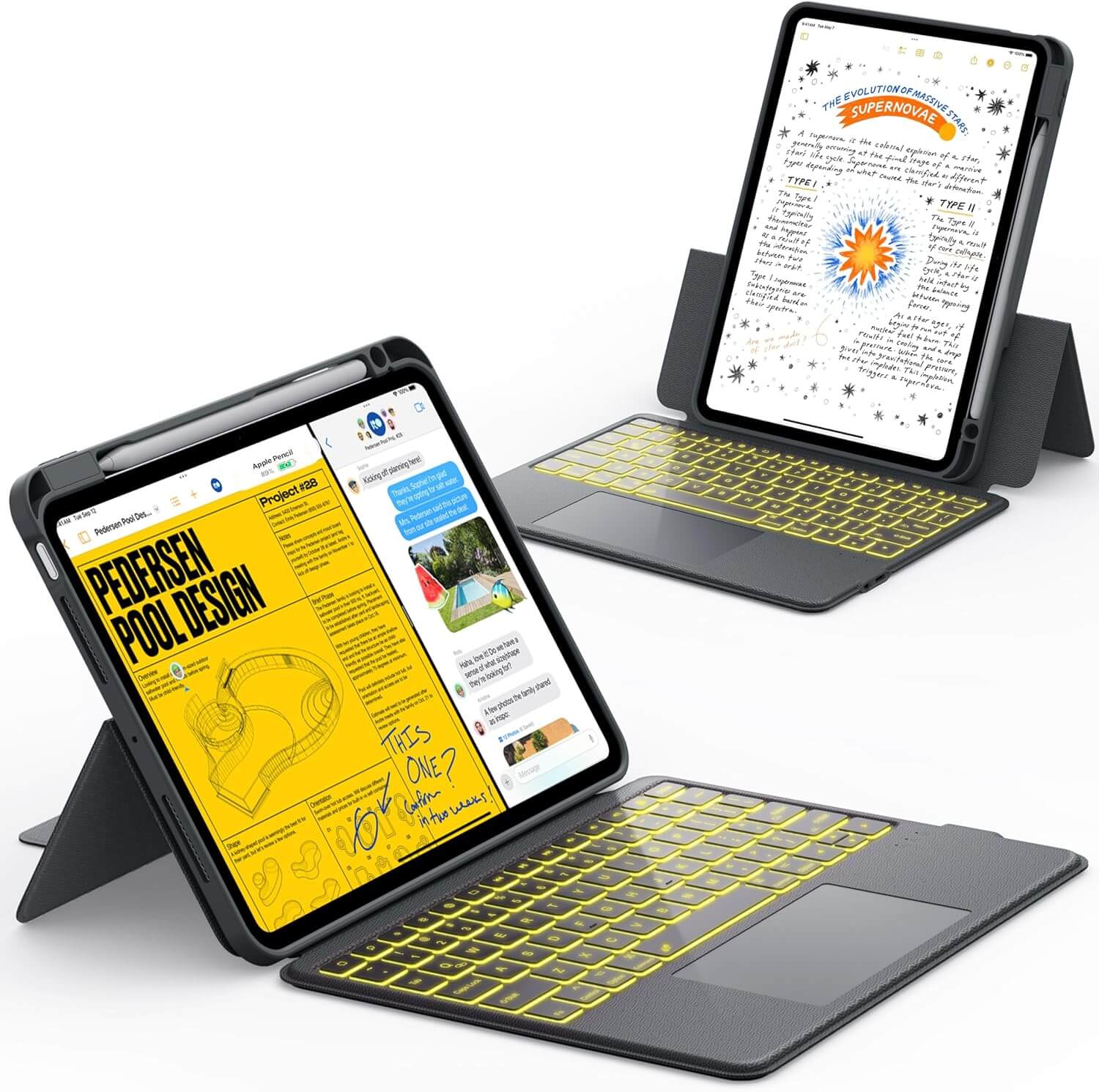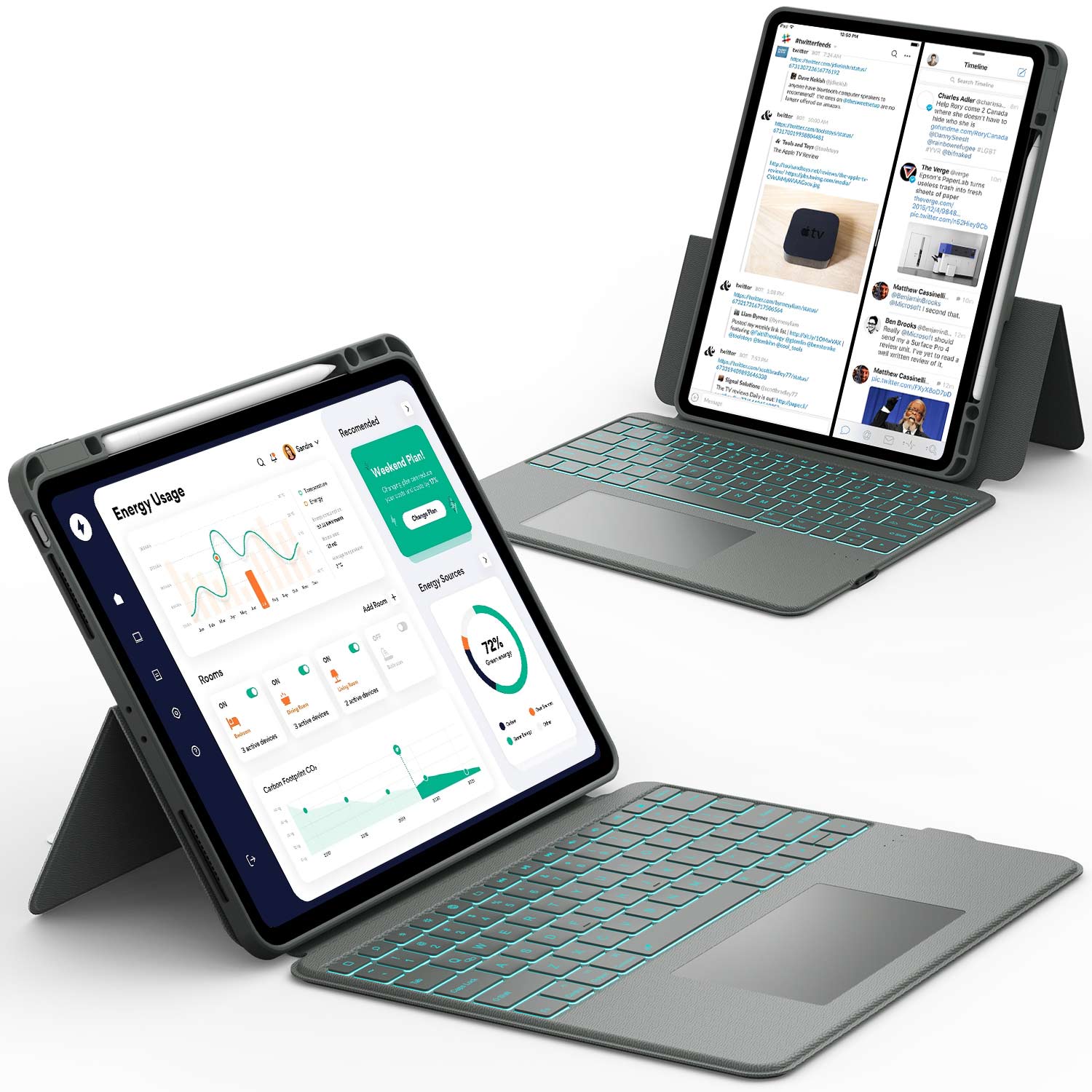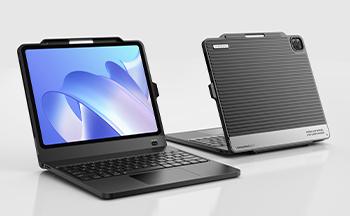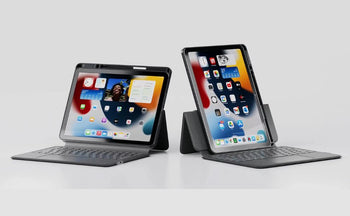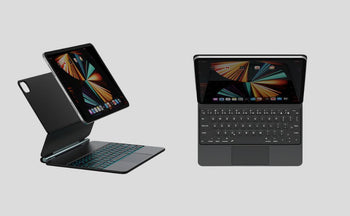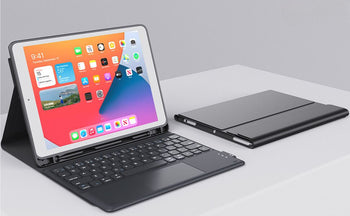Excel for iPad brings powerful spreadsheet capabilities to your tablet, but with a touch-optimized interface that differs from its desktop counterpart. Whether you're a spreadsheet novice or a desktop Excel expert transitioning to mobile, this guide will help you navigate the iPad version with confidence.
In this 2025 beginner's guide, we'll walk through everything from basic setup to advanced features, highlighting iPad-specific functionality and providing practical tips to boost your productivity. By the end, you'll have the skills to create, edit, and share professional spreadsheets directly from your iPad.
Take your Excel productivity to the next level with our iPad keyboards with trackpad. Navigate spreadsheets with precision and speed using cursor control designed for detailed work.
Getting Started With Excel For iPad
Excel for iPad brings spreadsheet capabilities to your tablet. The app combines touch controls with familiar Excel features, making it easy for beginners and experienced users alike.
Downloading And Setting Up Excel
To use Excel on your iPad, download the app from the App Store. Search for "Microsoft Excel" and tap "Get" to install. The app is free, but you need a Microsoft account to use it.
After installation, open Excel and sign in with your Microsoft account. If you don't have one, you can create it in the app. For full functionality, subscribe to Microsoft 365, which gives you premium features and cloud storage through OneDrive.
Once signed in, you'll see the home screen with template options and recent files. If you use OneDrive, Excel syncs your documents across devices so you can work on spreadsheets started elsewhere.
Understanding The iPad Interface
Excel's iPad interface is slightly different from the desktop version but keeps familiar elements. The main screen shows your recent files and templates for quick access.
When you open a spreadsheet, you'll see the ribbon at the top with tabs like Home, Insert, and Formulas. Tap a tab to view its tools.
The formula bar sits above your spreadsheet for viewing and editing cell contents. Tap to navigate cells, and drag your finger to select multiple cells.
To access more options, tap and hold on cells, charts, or objects to bring up the contextual menu with formatting and actions for your selection.
Touch Vs. Keyboard Controls

Excel for iPad supports both touch gestures and keyboard controls. Basic touch gestures include:
- Tap to select a cell
- Double-tap to edit a cell's contents
- Pinch to zoom in or out
- Swipe to scroll through your document
For faster data entry, connect a Bluetooth keyboard to your iPad. This activates keyboard shortcuts similar to the desktop version. Press Tab to move between cells and Enter to complete an entry.
When working with complex formulas or large data sets, switch to keyboard mode for quicker input and editing.
Essential Excel For iPad Functions
Excel for iPad lets you create, edit, and analyze spreadsheets on the go. The app includes core features for managing data, performing calculations, and visualizing results—all optimized for touch input.
Creating And Formatting Spreadsheets
To get started, tap the plus icon to create a new workbook or open an existing one from OneDrive. The ribbon shows formatting options at the top.
To format cells, select them by tapping and dragging, then use the Home tab. You can:
- Bold, italicize, or underline text
- Change font styles and sizes
- Adjust cell colors and borders
- Create tables by selecting your data and tapping "Format as Table"
For quick formatting, use the mini toolbar that appears when you select cells. Pinch to zoom and swipe to navigate between sheets.
Excel for iPad supports multiple worksheets in a workbook. Tap the "+" at the bottom to add new sheets. Double-tap sheet tabs to rename them for better organization.
Working With Formulas And Functions
Excel's calculation power remains strong in the iPad version. Tap a cell and then the formula bar to access formulas.
Common functions include:
|
Function Type |
Examples |
|
Math |
SUM, AVERAGE, COUNT |
|
Text |
CONCATENATE, LEFT, RIGHT |
|
Logic |
IF, AND, OR |
|
Lookup |
VLOOKUP, HLOOKUP |
To insert a function, tap the fx button in the formula bar. Select your function and Excel guides you through the parameters.
AutoSum lets you quickly add numbers—tap a cell below your data and select the ∑ button. Use parentheses to control calculation order in complex formulas.
Tap cells to include them in your formula instead of typing addresses manually.
Data Visualization Tools
Turn your data into visuals using Excel's chart tools. Select your data range, tap Insert, then choose Charts.
Popular options include:
- Bar and column charts for comparing values
- Line charts for tracking trends
- Pie charts for showing proportions
- Scatter plots for analyzing relationships
After creating a chart, tap to select and modify elements like titles, legends, and axes.
Create PivotTables through the Insert tab to summarize large datasets into reports. Drag fields to rows, columns, and values to restructure your view.
Use filters to focus on specific data. Tap the filter button in table headers or chart corners to show only relevant information.
Our iPad Pro keyboard cases combine protection with productivity. Get laptop-like typing experience while keeping your device safe—perfect for Excel power users.
Advanced Features For iPad Users
Excel for iPad now includes advanced tools designed for mobile use. The 2025 version adds new capabilities for productivity and analysis.
Using Excel With Apple Pencil
The Apple Pencil changes how you interact with Excel spreadsheets on your iPad. Draw shapes, annotate cells, and highlight data points with precision. Select multiple cells by circling them with the Pencil.
Write formulas directly into cells with the Pencil, and Excel converts your handwriting to text. This helps when entering complex formulas on the go. Sign documents or add handwritten notes to reports without switching apps. Use the Pencil for quick markup of reports during meetings.
The latest update supports pressure sensitivity, letting you create different line weights for charts or markups.
Cloud Synchronization And Sharing
Excel for iPad integrates with cloud services, so your spreadsheets stay accessible and up-to-date. Files sync across devices through OneDrive or iCloud.
Share workbooks with colleagues and set permissions:
- View only: For sharing reports
- Comment: For feedback
- Edit: For collaboration
Multiple team members can work at the same time on the same spreadsheet. Changes appear instantly with color-coded indicators.
Version history lets you review or restore previous versions of your workbook. The 2025 update adds smart conflict resolution to merge changes after offline edits.
For large datasets, use selective synchronization options to save bandwidth on your iPad.
Automation And Templates
Excel for iPad now supports simplified macros and VBA scripts, bringing automation to your tablet. Record actions and replay them to handle repetitive tasks.
Pre-built templates for iPad users help you start new projects:
|
Template Type |
Best Used For |
|
Financial |
Budgeting, forecasting |
|
Project Management |
Timelines, resource allocation |
|
Data Analysis |
Custom dashboards, reporting |
Power Query on iPad lets you clean and transform data on your device. Import data, apply transformations, and refresh with one tap.
Smart templates adjust to your screen size and orientation for optimal viewing. The Template Gallery offers industry-specific solutions from Excel experts.
Advanced users can build custom functions using simplified coding tools for touch interfaces. These functions work on both desktop and iPad versions.
Excel For iPad Limitations And Workarounds
Excel for iPad has some limitations compared to the desktop version. Knowing these constraints and using practical workarounds helps you get the most from Excel on your iPad.
Desktop Features Missing On iPad
Excel for iPad offers impressive functionality, but several desktop features are notably absent. The most significant limitations include:
- PivotTables with reduced functionality — while viewable, creating complex PivotTables is difficult with touch controls
- No macros or VBA programming — preventing automation of repetitive tasks entirely
- Absence of Power Query and Power Pivot — limiting your ability to transform and model large datasets
Advanced formatting also takes a hit on the iPad version. You'll find:
- Limited chart customization options
- Fewer conditional formatting rules
- Reduced cell styling capabilities
While collaboration hasn't been forgotten, it too comes with restrictions. Real-time co-authoring works reasonably well, but you'll miss desktop features like tracked changes and the granular sharing permissions available in the full version.
Alternative Apps And Extensions
Fortunately, several third-party solutions can help bridge the functionality gaps in Excel for iPad. Consider these alternatives to enhance your spreadsheet capabilities:
- Apple Numbers: Offers strong iPad optimization and unique visualization features tailored for the touch interface
- Google Sheets: Provides superior collaboration tools with easier sharing and simultaneous editing, plus seamless Google Drive integration
- DataMesh: Handles complex data visualization needs when Excel's charting capabilities fall short
- MathPad: Simplifies complex equation creation on the touchscreen for formula-heavy work
- Zapier: Connects Excel to other apps through cloud automation, partially compensating for the lack of macros
- Tiller Money: Delivers financial templates and functions specifically designed for budgeting and tracking that Excel for iPad doesn't include
Optimizing Performance On Older iPads

If you're working with an older iPad model, you may encounter performance issues, especially when handling large spreadsheets. Here are several effective strategies to improve Excel's performance:
- Split large workbooks: Divide comprehensive spreadsheets into smaller, more focused files that process more efficiently
- Clear device memory: Free up resources by closing background apps and periodically restarting your iPad to clear the cache
- Switch to manual calculations:** Navigate to Formulas → Calculation Options → Manual to control when Excel recalculates, preventing constant processing during data entry
- Minimize visual elements: Reduce the use of conditional formatting, charts, and images to decrease the processing demands
- Simplify formula complexity: Use basic cell references instead of nested or complex formulas whenever possible, as simpler calculations run faster on limited hardware
These adjustments can significantly improve your experience when working with Excel on older iPad models, allowing you to maintain productivity without upgrading your device.
Just upgraded to the 2025 iPad Air 13? Our specialized cases offer the perfect fit while providing the protection and functionality you need for spreadsheet work on the go.
Conclusion: Excel for iPad
Excel for iPad delivers powerful spreadsheet capabilities with a touch-optimized interface perfect for mobile productivity. While it doesn't match the desktop version feature-for-feature, the 2025 version provides everything most users need for creating, editing, and sharing professional spreadsheets on the go.
Whether you're creating simple budgets or complex financial models, mastering Excel for iPad can significantly enhance your tablet's utility. The combination of touch controls, keyboard shortcuts, and Apple Pencil support creates a flexible experience that adapts to your working style.
Ready to further expand your iPad's productivity potential? Check out our guide on Do Apple Pencils Work on All iPads to see if your device is compatible with this powerful input tool for Excel and beyond.
Frequently Asked Questions: Excel for iPad
Can you run Excel on iPad?
Yes, Microsoft offers a dedicated Excel app for iPad devices. The app is optimized for touch controls and Apple Pencil compatibility. You can download it directly from the App Store with an interface designed for iPad screens.
Is Microsoft Excel free?
Excel for iPad offers limited free functionality for viewing and simple editing. Full features, including creating new spreadsheets and using advanced functions, require a Microsoft 365 subscription. The free version works well for basic needs, but professional users will need the paid version.
How much does Excel for iPad cost?
Excel requires a Microsoft 365 subscription, with Personal plans starting at $6.99 monthly or $69.99 annually. Family plans cost $9.99 monthly ($99.99/year) and can be shared with up to six people. Many employers and educational institutions provide free access through institutional licenses.
What is the Apple version of Excel?
Numbers is Apple's spreadsheet application that comes pre-installed on new iPads or free from the App Store. It can open and edit Excel files, though some advanced Excel features may not transfer perfectly. Numbers integrates seamlessly with other Apple products and services.

